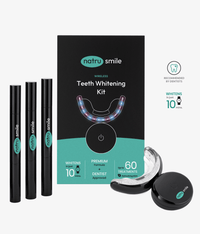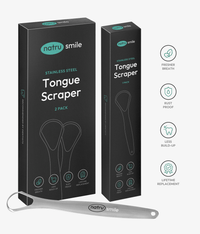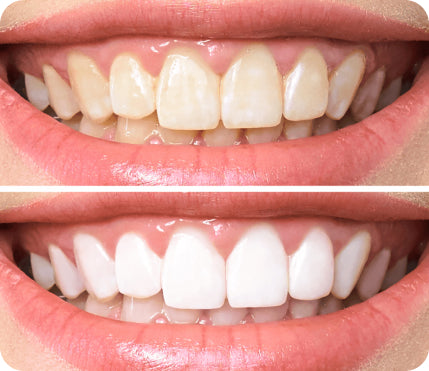
All products are certified by dental expert Dr. Greg Grillo
Roughly 45% of children need braces to properly align their teeth, according to orthodontists' estimates. Beyond teenagers and children, millions of adults around the world also wear braces to straighten their teeth and improve their smiles.
With the help of modern technology, orthodontics has become a more efficient and less painful process. Orthodontic treatments now include 3D imaging to map out the teeth and facial structure, as well as accelerated tooth movement techniques to speed up the process without sacrificing quality results.
However, orthodontic treatment still requires a great deal of preparation and dedication. A successful treatment plan will involve the patient following instructions precisely, attending regular appointments and follow-up visits, and adhering to an effective oral hygiene routine.
This article will help you learn what to expect from orthodontic treatment, how to prepare, and the steps you need to take to ensure a successful result.
What Is Orthodontics?
Orthodontics is the practice of correcting misaligned teeth and jaws using braces, retainers, and other dental appliances. Orthodontists use various methods to straighten teeth, including metal brackets and wires, clear aligners, tooth-colored braces, and functional appliances.
The most common type of orthodontic treatment is metal braces, which involve attaching brackets and wires to the teeth and gradually moving them into their proper position. This treatment is the traditional approach that most people imagine when they think of braces.
However, braces have come a long way in recent years, with advances in materials and techniques that make them more comfortable than ever before.
Now, people can choose between clear braces and Invisalign treatment in addition to metal brackets.
How Do Orthodontic Treatments Work?
Depending on the severity of your case and the type of treatment you choose, your orthodontic procedure will involve a combination of treatments to correct your teeth. It could take anywhere from 6 months to 2 years for orthodontic treatment to achieve its desired results.
Typically, the process looks something like this:
- Initial Consultation: During the initial consultation, your orthodontist will examine your teeth and jaw to determine the best course of treatment for you.
- Preparatory Work: This may involve taking X-rays and making impressions of your teeth in order to create a detailed map of your mouth. They will also use 3D imaging to get an accurate picture of your teeth and facial structure. If one or more of your teeth are significantly misaligned, your orthodontist may also suggest removing teeth or using special appliances to improve your bite.
- Braces: Once the preparatory work is complete, your orthodontist will fit you with braces and make any necessary adjustments for comfort and effectiveness. This will last for several months and involve regular follow-up visits for adjustments.
- Follow-Up Visits: During follow-up visits, your orthodontist will check the progress of your braces and make any necessary adjustments.
- Retention: After you have finished your treatment and had your braces removed, your orthodontist will give you a retainer to wear in order to keep your teeth in their new position.
Orthodontic treatments work over time by slowly forcing your teeth into the desired position. As the braces are tightened and adjusted, they gradually move your teeth in small increments until they reach their correct positions.
Why Should I Have Orthodontic Treatment?
Orthodontic treatment is generally recommended for people who have misaligned teeth, overcrowding in the mouth, or a bad bite. Having braces can help straighten your teeth and correct any issues with your bite, leading to a more attractive smile and improved oral health. Orthodontic treatment can also address speech problems related to misaligned teeth and jaw structure. Some people have a lisp or whistling sound when talking caused by buck teeth or a misaligned jaw. Having your teeth straightened by an orthodontist can help with these problems and make speaking more comfortable.
Because of braces' ability to correct aesthetic and functional issues with teeth and jaws, they also improve confidence in those who fix their teeth with them. Feeling more confident in your smile can make a huge difference in how you feel about yourself and how you interact with people around you.
Who Carries Out Orthodontics?
Orthodontics treatments are carried out by orthodontists, who are specialist dentists with additional training in the field. Orthodontists have extensive knowledge and experience in helping patients achieve their desired smile and bite.
Your orthodontist will share information with your general dentist, who will take care of routine dental cleaning and check-ups to ensure your teeth remain healthy before, during, and after the orthodontic treatment.
The Process Of Orthodontic Treatment
As shown above, the orthodontic treatment process can be broken down into a few basic steps, with the braces wearing and follow-ups taking up most of the time. Let's dive deeper into what each step entails and how to prepare.
Diagnostics
When you visit your orthodontist for a consultation, they will use a variety of methods to determine the best course of action. Technology has advanced significantly in the past decade, and orthodontists now use 3D imaging to map out your jaw and teeth, which allows them to see exactly how your mouth is structured. Using these tools, they can determine the best course of treatment for you.
Your orthodontist will also take X-rays to get an accurate picture of what's going on inside your mouth, as well as photographs of your face and teeth so they can measure progress over time.
Your diagnostic evaluation shouldn't take more than three visits. Afterward, your orthodontist will discuss the best treatment plan for you and how much your braces will cost.
Treatment
Once it's time for your treatment, your orthodontist will start by fitting you with brackets and wires that will slowly move your teeth into their desired position.
After your first visit, you will probably notice your teeth hurt as they adapt to the new arrangement. This is perfectly normal and should disappear as your mouth gets used to the pressure and extra hardware in your mouth.
Your orthodontist will then schedule regular follow-up visits where they can adjust the braces and make sure everything is progressing as planned.
Depending on your situation, this may mean visiting every two to four weeks to maintain progress and ensure that the treatment is going as planned.
Follow-Up And Retention
Once your teeth have been properly aligned, your orthodontist will remove the braces and replace them with a retainer to help ensure they stay in their new positions. Teeth retainers are usually made of clear plastic or metal wires and are designed to fit on the back of your teeth. You will have to wear them for several months, and then you may only need to wear them at night or when you're engaging in activities that could cause them to move out of position.
If you don't wear your retainer after braces, you risk orthodontic relapse—a condition where your teeth slowly move back to their original, crooked positions.
Orthodontic relapse already impacts more than half of orthodontics patients after ten years, and those who don't wear their retainers can expect to relapse even more quickly.
Benefits Of Orthodontics
Although orthodontic treatment can be long, painful, and costly, it is also worth the investment. Orthodontic procedures offer several benefits to patients, including:
- Improved overall oral health
- Easier brushing and flossing
- Higher levels of confidence and self-esteem
- Ability to chew food properly
- Enhanced speech clarity
- Reduced chances of jaw pain or TMJ disorders
- Reduced risk for cavities, gum disease, and tooth injury
Put simply, orthodontics treatments offer long-term solutions to misaligned and crooked teeth and can result in healthier teeth and gums with improved functionality.
How Do I know If I Need Orthodontic Treatment?
Since orthodontics generally treat aesthetic concerns, it may not always be easy to tell if you need orthodontic treatment. To determine if you should see an orthodontist, consider the following signs:
- Jaw pain or popping
- Protruding teeth
- Crowding
- Bite issues (overbite, underbite, open bite)
- Difficulty eating or speaking
During childhood development, dentists also take routine x-rays of children's teeth and jaws to monitor the growth of their permanent teeth. Usually, these x-rays can indicate whether orthodontic treatment will be necessary for the future.
If you aren't sure, the best way to determine if you need orthodontic treatment is to visit your dentist. During a routine checkup, they can evaluate your mouth and teeth. In some cases, they may be the ones who suggest treatment without you asking.
Orthodontia Vs. Orthodontics: What's The Difference?
Although "orthodontia" and "orthodontics" both refer to the same field of dentistry, there is a slight difference between them.
Orthodontia describes the treatment and care of the teeth and jaws, which typically involves braces, retainers, and other orthodontic appliances.
Orthodontics is the science behind this treatment, focusing on the study of how tooth position affects dental health, facial form, and even speech development.
Common Orthodontic Problems
Most orthodontic problems can fit into one of a few categories:
Overjet
Overjet, also known as “buck teeth,” is a dental issue where the upper front teeth extend beyond the bottom front teeth. This condition can cause difficulty in eating, speaking, and smiling and can lead to gum irritation or even jaw problems.
When someone has buck teeth, the upper and lower jaw may not align properly or fit together correctly.
Underbite
An underbite (or "reverse overjet") is the opposite of an overjet, where the lower front teeth protrude past the upper front teeth. This can cause difficulty chewing, jaw pain, and speech impediments.
Underbites are typically noticeable when someone smiles, and they can also cause teeth to wear down faster than normal. In severe cases of underbite, the chin protrudes forward and the lower jaw looks larger than the upper jaw.
Overlapping Teeth
Overlapping teeth occur when one or more teeth overlap, causing them to appear crooked and misaligned with the rest of the teeth. This is common in crowded mouths and can cause difficulty brushing and flossing.
When teeth overlap, they usually take longer for braces to move. In some cases, teeth may need to be removed for the remaining teeth to move into better alignment.
Crowded Teeth
Crowding is when there isn't enough space in the jaw for all teeth to fit properly. This results in overlapping and crooked teeth that are difficult to clean and leave patients vulnerable to tooth decay and gum disease.
Crowding can occur due to genetics, early loss of baby teeth, or a combination of both. It usually looks like teeth are pressed too closely together, making it difficult to brush and floss properly.
Crooked Teeth
Crooked teeth are similar to overlapping and crowded teeth, but "crooked teeth" is more of an umbrella term that can describe a variety of issues. Crooked teeth can be caused by genetics, jaw misalignment, and other orthodontic problems like overbite, underbite, or open bite.
Rotated Teeth
If a tooth is rotated, it is improperly angled compared to the rest of the mouth. This can make brushing and flossing more difficult, which can lead to decay and other dental problems. Rotated teeth also cause the mouth to appear asymmetrical, as one side of the jaw will be aligned differently than the other.
Rotated teeth are tricky to fix and can require several visits to the orthodontist.
Since they must be rotated back to their correct position and realigned, they also require more time to straighten.
Impacted Teeth
Impacted teeth are teeth that have not fully erupted from the gums and cannot properly fit into the dental arch. This usually occurs when there's not enough room in the jaw for all of the teeth to fit, resulting in a tooth becoming stuck below the gum line.
Impacted teeth can cause severe pain and discomfort, as well as swelling and infection of the gums. They can also cause damage to the surrounding teeth, leading to misalignment or crowding.
Impacted teeth can grow just about anywhere. Some even grow in the opposite direction of where they should be.
Who Shouldn’t Have Orthodontic Treatment?
Orthodontic treatment is not recommended for those with severe gum disease or decay, as it can worsen their condition. People who are pregnant should also wait until after they have given birth before considering orthodontic treatment.
Children who still have their baby teeth should wait until they have all their adult teeth before undergoing orthodontic treatment. Otherwise, orthodontic care might have been all for nothing once their adult teeth grow in.
Of course, those with perfect alignment (or close to it) don’t need orthodontic treatment, either.
Different Types Of Orthodontic Treatments
Depending on your case and preference, there are many different kinds of orthodontic treatments. Each method can be discussed with your dentist to determine the best course for you.
Braces
Traditional braces are the most common type, and they are usually the most cost-effective. Most people choose from either gold braces, metal ones, or colored ones, and they are attached to the front of your teeth with metal brackets. Braces work by applying pressure to your teeth and gradually shifting them into the desired position.
In recent years, ceramic braces (i.e., teeth-colored) have become more popular as a less visible option compared to traditional braces.
Clear Aligners (Invisalign)
Invisalign is a newer form of orthodontic treatment that involves a series of clear aligners or trays that fit over your teeth and gradually move them into their correct positions. Invisalign is usually about the same cost or slightly more expensive than traditional braces, but many patients choose this method because it’s virtually invisible and can be removed during meals. Invisalign users also don't have to clean their teeth with braces, which can be a cumbersome task.
Invisalign usually works faster than traditional braces (albeit with less permanent results), and research has shown its improvement in realigning teeth.
Headgear
Headgear is a type of orthodontic appliance worn around the head and neck that applies pressure to the teeth and jaw in order to properly align them. It’s usually only recommended for children, as it can be painful and uncomfortable to wear over long periods of time. It is also not practical, as it limits activities such as sports and swimming.
This type of appliance would only be required when the patient has an overbite, and jaw growth needs to occur before traditional braces or Invisalign can be effective.
Retainers
Retainers are the next step for patients after they have their braces removed. They come in two varieties: removable and permanent.
Removable retainers are worn for a few hours each day and help to keep your teeth from shifting back into their previous positions. Permanent retainers are similar to braces—they have wires on the back of your teeth that attach to the gums, keeping them stable and preventing movement.
Palate Expanders
Palate expanders are used to widen the palate (i.e., the roof of your mouth). They are usually recommended when the jaw is too small for all the teeth to fit in properly and can be used to adjust bite problems such as an overbite or crossbite.
Palate expanders work by gently widening the jaw, allowing the teeth more space to fit. They usually look like metal plates with hinges, and they are inserted in the roof of your mouth.
Teeth Removal
If your teeth are severely misaligned, orthodontic hardware might not be able to move them to where they belong. In this case, teeth removal may be necessary in order to create the right amount of space. This is usually recommended as a last resort and only recommended if absolutely necessary.
Orthognathic Treatment
Orthognathic treatment is an option for patients with major jaw problems, such as a severe overbite or underbite. The goal of orthognathic treatment is to reposition the jaw in order to improve the patient’s bite and facial appearance.
This type of treatment requires surgery and is usually done in cases where other methods such as braces or Invisalign can't correct the problem.
Orthodontic Mini-Implants
Mini-implants are a relatively new treatment in the orthodontic world. They are small titanium screws that are inserted into the jawbone and used to help move teeth into their correct positions without the use of braces or headgear.
These implants have proven to be advantageous in correcting bite issues quickly and with minimal discomfort, making them a popular choice for those who want to avoid traditional treatments. However, they are still relatively new and expensive compared to other methods.
Want to learn more? These are the questions our customers frequently ask us.
What Are The Disadvantages Of Orthodontics?
Although orthodontics are advantageous (and often required), there are some drawbacks to be aware of:
- Longer treatment times: Orthodontic treatment can take up to two years or longer, depending on the severity of the case.
- High cost: Orthodontics can be costly and not all insurance plans cover them.
- Speech impediments: Patients may experience difficulty speaking while wearing braces or headgear.
- Inconvenience: Orthodontic appliances can limit certain activities and require frequent visits for tightening and checkups.
- Oral hygiene: Braces and headgear make flossing more difficult and can increase the risk of cavities and yellow teeth without proper care.
- Discomfort: Metal wiring in your mouth can cause irritation and soreness, as can the pressure braces apply to your teeth.
- Aesthetics: Metal braces and headgear can look unsightly and may be embarrassing for some patients.
How Long Do Results Last After Orthodontic Treatment?
As long as patients continue preventive care measures like wearing a retainer, results of orthodontic treatment can last a lifetime. However, most patients have some degree of orthodontic relapse after ten years. This is because teeth are constantly shifting and the jawbone can change over time.
Can Orthodontics Damage My Teeth?
No, as long as orthodontists follow best practices and professional guidelines, the risk of damaging your teeth is very low. Orthodontic appliances are designed to gently reposition the teeth in a healthy way. However, if certain treatment methods are used improperly or for too long they can cause damage.
Is Orthodontic Work Permanent?
Orthodontic work is as permanent as it gets. Whether or not the results last a lifetime depends on how well the patient follows their orthodontist’s instructions and continues preventive care measures like wearing retainers.
What Are The Three Classifications Of Orthodontic Treatment?
There are three classes of orthodontic treatment:
- Class I: This type of treatment is used to correct mild malocclusion (misalignment) of the teeth that can be corrected with braces, Invisalign, or other appliances.
- Class II: This type of treatment is used to correct moderate and severe malocclusion. It typically requires headgear, elastics, and brackets to move the upper and lower teeth into the correct position.
- Class III: This type of treatment is used to correct severe underbites and other jaw discrepancies. Surgery may be necessary in these cases to reposition the jaw bones.
What Are The Stages Of Orthodontic Treatment?
Orthodontic treatment can be broken up into a few main stages:
- Pre-treatment: Initial consultation, x-rays, diagnostics, and other tests to determine the severity of misalignment and identify any underlying dental health issues.
- Orthodontic appliances: Fitting, placement, adjusting, and monitoring braces and other orthodontic appliances.
- Post-treatment: Final x-rays and follow-up appointments to ensure proper alignment and health of the teeth and gums.
- Retention: Wearing a retainer keeps teeth in their new positions after treatment.
Is Orthodontic Treatment Painful?
Orthodontic treatment is usually slightly painful. When orthodontic appliances are first placed, they can cause discomfort. Wiring and brackets can also make cuts on the inside of the mouth. However, the pain is usually manageable and should subside within a few days of tightening or placement.
Is An Orthodontic Treatment Harmful To The Teeth?
Orthodontic treatments are not harmful to your teeth as long as they are performed correctly. They can help to reposition teeth in a healthy way and reduce the risk of gum disease, cavities, and other oral health issues. However, if certain treatments are used improperly or for too long, they can cause damage to the teeth and gums.
What Is A Full Orthodontic Treatment?
A full orthodontic treatment consists of a complete diagnostic assessment, placement of braces or other orthodontic appliances, regular adjustments to the treatment plan as needed, and wearing a retainer after treatment is complete. It typically takes 12-24 months for the full treatment process to be completed, although some can be completed in as little as six months.
What Is The Most Common Orthodontic Problem?
The most common orthodontic problem is teeth misalignment, which affects the vast majority of people around the world. Because it is so common, treatment is also very straightforward and most people worldwide have access to proper orthodontic care.
What Is The Best Age For Orthodontic Treatment?
The pre-teen and teenage years are best for orthodontic treatment. During these years, developing children don't have many personal responsibilities and aren't likely to be hindered by the appearance of their braces. This is also the age window where most others get braces, so kids don't have to feel alone in the process.
How Long Does Orthodontic Treatment Last?
Orthodontic treatment typically lasts between six months and two years. On the low end, simple realignment can be completed in six months. In most cases, fixing the position of teeth takes over one year due to the complexity of braces, elastics, and other orthodontic appliances. In serious cases that require jaw surgery, headgear, or other drastic measures, two years is a common length of time for the full treatment process.
How Many Times Do You Go To The Orthodontist Before Getting Braces?
Most people have to go to the orthodontist at least three times before they get their first set of braces. The first two visits are for diagnostic assessments, x-rays, and other tests. After that, patients will usually come back for a fitting appointment where the braces will be placed. Each visit will take about one hour, but shouldn't require much preparation on the patient's end.
Is Orthodontic Treatment Worth It?
Orthodontic treatment is almost always worth it, and those who receive treatment tend to be much happier with the results. With orthodontic care, people can enjoy better oral health, improved self-confidence, and a more attractive smile overall. The cost of orthodontic treatments varies from one patient to another but is typically worth it in the end.












